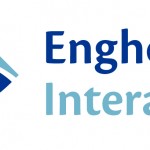Building the Connected Council Contact Centre” – Turning Technology from a Barrier to a Benefit
by Jeremy Payne, VP of Product Marketing, Enghouse Interactive

From the council perspective, delivering on this means implementing digital self-service communications channels that enable residents to interact in a way that suits them best. Doing this requires careful planning. Too many channels can result in confusion. Poorly-thought-through processes exacerbate problems by causing mistakes that increase call volumes, with more time and effort spent untangling issues and concerns.
Fundamental to the problem is a lack of understanding of the customer journey. Councils need to ensure they understand what customers want from any interaction and map the customer journey correctly up front, before layering in additional channels.
To do this, councils should look at the top five citizen journeys within their authority, prioritise them and get them working efficiently, using technology where appropriate. It sounds easy but the biggest problem with this is a cultural friction from department to department. Once you start layering in technology, people start to become defensive – i.e. what does this mean for my job?
Another key issue here is that councils shouldn’t rely too heavily on self-service. Ultimately, you can have a largely self-service model, but councils also need escalation paths. Some people can easily work their way through a self-service process. Others might get halfway and then get stuck. It’s at that point you need an escalation path to someone in the contact centre while also capturing the context of what was done in the self-service channel, so the customer isn’t asked to repeat answers.
It’s a balance of how you shape the customer journey, and how you think about that in the design process. You have got to build the escape hatches back to the contact centre. Residents need to be able to get the results they are looking for quickly and efficiently rather than spending valuable time working through a complex process only to find that they have to abandon the interaction and start again.
Building Connections
Delivering a fast, effective service to council residents also involves building a connected customer service operation that helps agents resolve queries more quickly. Agents should be able to access key information about local council services from a central knowledge base at the point of interaction with residents, for example, rather than being forced to scrawl through complex printed documents. Ideally, they should be presented with a pathway, which they follow through, enabling them to provide help quickly and efficiently.
There are other ways councils can build a more connected customer service approach such as using collaboration tools to triage calls out to domain experts in the middle and back office or out to the field. Also, bringing in new AI-driven technologies such as active listening applications, which enables an automated bot to go off and pull information together based on what it hears, effectively upscaling the agent in real time.
The connected enterprise approach is also about initiating an organisation-wide collaboration in order to provide a better service to the public. As the local authority starts to put more routine interactions through an automated or self-service mechanism, by definition what is left is awkward and ugly, as the customer will have tried to solve it themselves and couldn’t. Now they’re calling their local council, and often, the only way the council can fix the problem is to collaborate – either within their organisation, sometimes with third-party suppliers and obviously with the citizen themselves. How do you pull all those people together in a collective dialogue?
Councils need to understand how they address that awkward problem when it arrives as it inevitably will. Is it just emailing people? Is it getting everyone together in a meeting room? Is it using a popular and fast-growing collaboration environment like Microsoft Teams? There are lots of potential benefits here. But the key element for councils is whatever the ultimate choice, what’s the plan for today and tomorrow?
Whatever the ultimate choice, the role of the frontline agent is likely to change. They will need new skills to handle different interactions and queries, to draw relevant information from the back office and from automated systems in order to provide a more informed service and answer queries more efficiently.
Looking Ahead
Technology can bring far-reaching benefits across local government. But there is great pressure on councils to get it right. If something goes wrong, it is typically very public and widely shared.
As they implement new digital strategies, there will inevitably be challenges in the way of councils who often have to deal with tight budgets and navigate complex legacy infrastructures. But as they evolve their service provision, councils can plot a positive route forward by focusing on the experience residents have in engaging with them and ensuring the customer journey is front and centre of their approach.
They need to prioritise those top citizen journeys and get them working efficiently across the whole operation, with technology playing an appropriate and targeted supporting role. If they get that right, they will have gone a long way towards efficient and effective service provision that meets the needs of stakeholders and residents.
Additional Information


For additional information on Enghouse Interactive visit their Website or view their Company Profile




